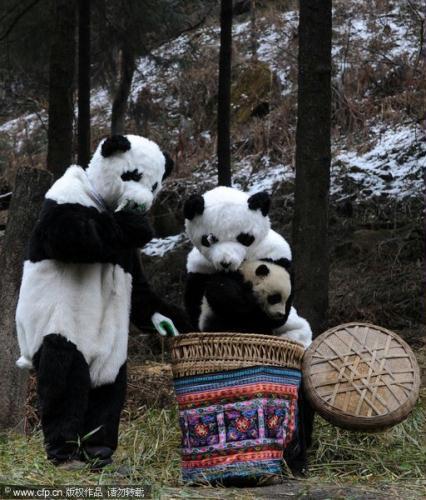|
A panda and her young cub have moved into their new home at a wildlife sanctuary in southwest China's Sichuan Province. The pair is adapting well to life in captivity, where they will spend the next two years before being released into the wild.

Cao Cao started her training program last summer at Wuloong Panda Reserve in southwest China's Sichuan Province.
Just a month later, she gave birth to her first cub. The pint-sized male panda has been in special care ever since.
Huang Yan, Deputy Engineer of Giant Panda Protection and Research Center, said, "The panda cub has had little contact with people since his birth. He sleeps in the open air, despite the chilly weather. The good news now is that he no longer relies on pandakeepers to survive."
After living in a small enclosed sanctuary for nearly half a year, Cao Cao and her cub are moving to their new, bigger home.
Experts from the Giant Panda Protection and Research Center are watching how the pandas adapt to their new environment using a 24-hour monitoring system.
The keepers even wear special "panda clothes" to remain inconspicuous when recording the cub's weight and height.
"There are more than 30 packs of pandas in the sanctuary. They will breed without human intervention. Our final goal is to reintroduce all the pandas to the wild." Huang said.
Cao Cao and her cub have adapted to their new environment seamlessly.
Pandakeepers will keep a close eye on their behavior in captivity over the next two years, before they can enter the wild.
|

